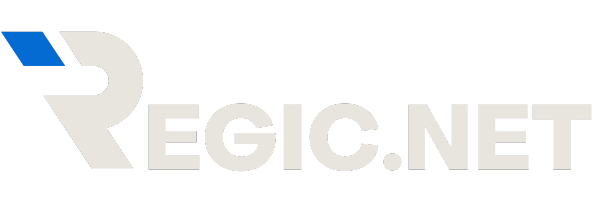Procurement Resource, a premier provider of procurement intelligence and market research solutions, has released its latest Camphene Production Cost Report. This detailed report offers crucial insights into the production economics of camphene, helping businesses, investors, and stakeholders make informed decisions regarding market entry and expansion.
Camphene: A Versatile Terpene with Industrial Significance
Camphene, a bicyclic monoterpene, is widely used in industries such as flavors and fragrances, pharmaceuticals, and biofuels. Its properties, including its role as an intermediate in synthetic organic chemistry, make it a crucial component in multiple applications. As industries shift towards bio-based and sustainable chemicals, camphene’s market potential continues to grow, driving demand for cost-effective and efficient production methods.
Comprehensive Insights for Setting Up a Camphene Production Unit
Setting up a Camphene Production Unit requires thorough planning, investment assessment, and an understanding of market dynamics, regulatory compliance, and production processes. Below is a detailed guide covering all key aspects:
1. Market Overview of Camphene
Camphene is a terpene compound widely used in fragrances, flavors, and chemical intermediates. It is obtained from turpentine oil and serves as a precursor in the synthesis of synthetic camphor, insecticides, and lubricants. The increasing demand for bio-based chemicals has fueled the market growth for camphene.
Key Market Drivers:
- Rising demand for fragrances and flavors in personal care and food industries.
- Growing use in bio-based fuel additives due to eco-friendly properties.
- Expanding pharmaceutical applications in antiseptics and anti-inflammatory drugs.
- High demand in the paints and coatings industry for resin formulations.
Market Challenges:
- Raw material price fluctuations affecting production costs.
- Strict environmental regulations on emissions and waste disposal.
- Availability of alternative compounds that may reduce camphene usage in certain applications.
2. Raw Material and Supply Chain Analysis
The primary raw material for camphene production is turpentine oil, which is derived from pine trees. The quality of raw materials impacts the purity and yield of camphene.
Raw Materials Required:
- Turpentine oil (source: pine trees)
- Catalysts (such as metal oxides)
- Solvents for purification
- Energy sources for distillation and processing
Supplier Considerations:
- Proximity to pine tree plantations to ensure steady supply.
- Reliable turpentine oil suppliers with consistent quality.
- Logistics and transportation networks for cost-effective raw material procurement.
3. Camphene Manufacturing Process
Camphene is typically produced by catalytic isomerization of α-pinene, a major component of turpentine oil. The process involves:
Step-by-Step Production Process:
- Turpentine Oil Extraction: Obtained from pine trees through distillation.
- α-Pinene Isolation: Fractional distillation separates α-pinene from turpentine oil.
- Isomerization Process:
- α-Pinene is subjected to catalytic isomerization using acidic catalysts like phosphoric acid or metal oxides.
- The reaction is controlled at moderate temperatures (100-150°C).
- Purification and Distillation:
- The crude camphene is distilled under vacuum to remove impurities.
- Additional filtration or crystallization may be required for high-purity applications.
- Packaging and Storage: The final product is stored in sealed containers to prevent oxidation.
Technology & Equipment Required:
- Fractional distillation columns for α-pinene separation.
- Reactor systems for catalytic conversion.
- Vacuum distillation units for purification.
- Storage tanks with temperature control.
4. Cost Structure and Investment Analysis
The cost of setting up a camphene production unit depends on plant capacity, raw material sourcing, equipment, and operational expenses.
Major Cost Components:
| Cost Factor | Description |
|---|---|
| Raw Materials | Turpentine oil, catalysts, and solvents. |
| Equipment & Machinery | Distillation units, reactors, filtration systems. |
| Land & Infrastructure | Factory setup, warehousing, utilities. |
| Labor & Operations | Skilled workforce for plant operation. |
| Energy & Utilities | Electricity, water, fuel costs. |
| Regulatory & Compliance | Permits, safety regulations, and environmental compliance. |
Estimated Investment:
- Small-scale plant: $1 – $5 million
- Medium-scale plant: $5 – $15 million
- Large-scale plant: $15+ million
5. Regulatory & Environmental Compliance
Operating a camphene production unit requires compliance with safety, environmental, and industrial standards.
Key Regulations to Consider:
- Environmental Impact Assessment (EIA) for emissions and waste management.
- Occupational Safety and Health Administration (OSHA) guidelines for worker safety.
- Chemical Handling & Hazardous Waste Disposal regulations.
- REACH & FDA Compliance for applications in fragrances, flavors, and pharmaceuticals.
Sustainability Measures:
- Implementing waste recycling for process byproducts.
- Using bio-based catalysts to reduce chemical waste.
- Energy-efficient distillation and recovery systems.
6. Profitability & Market Opportunities
The profitability of camphene production depends on market demand, production efficiency, and cost management.
Revenue Streams:
- Selling to fragrance and flavor manufacturers.
- Supplying pharmaceutical industries for medicinal formulations.
- Providing to chemical industries for resin and coating applications.
- Exporting to international markets with growing demand for bio-based chemicals.
Future Growth Trends:
- Rising preference for eco-friendly and bio-based chemicals.
- Increasing demand in pharmaceutical and personal care industries.
- Potential for green fuel additives using camphene derivatives.
7. Business Plan and Strategic Considerations
A well-structured business plan is essential for successful implementation and growth.
Key Elements of a Business Plan:
- Market Analysis: Demand, competition, and pricing trends.
- Production Plan: Process selection, plant capacity, and raw material sourcing.
- Financial Projections: Investment, operating costs, and profit margins.
- Marketing & Sales Strategy: Target industries and customer acquisition.
- Risk Management: Addressing supply chain disruptions and regulatory challenges.
Strategic Location Selection:
- Near raw material sources (pine tree plantations).
- Access to major transportation hubs for logistics.
- Availability of skilled labor and low-cost utilities.
Setting up a camphene production unit requires detailed planning, investment in advanced technology, regulatory compliance, and market analysis. With increasing demand for bio-based chemicals, camphene production offers a profitable business opportunity in pharmaceuticals, personal care, and industrial applications. A strategic approach focusing on cost efficiency, sustainability, and market expansion can ensure long-term success.
Market Trends and Sustainability Outlook
With the growing preference for eco-friendly and sustainable chemicals, the camphene market is witnessing increasing adoption across various industries. The Asia-Pacific region dominates consumption, fueled by expanding industrial applications in perfumery, pharmaceuticals, and biofuels. Moreover, research into greener extraction and synthesis methods is reshaping production strategies, making efficiency and sustainability key factors for success.
Why Choose Procurement Resource?
Procurement Resource provides expert-backed, data-driven insights to help businesses optimize their procurement and production strategies. With a focus on cost modeling, price analysis, and supply chain intelligence, the company empowers clients to stay ahead in competitive markets.
Request a Free Sample of the Report
For businesses and investors looking to gain a comprehensive understanding of camphene production costs, the Camphene Production Cost Report by Procurement Resource offers unparalleled insights.
Request a Free Sample Now: https://www.procurementresource.com/production-cost-report-store/camphene/request-sample
About Procurement Resource
Procurement Resource is a trusted name in market research and procurement intelligence, providing high-quality reports covering diverse industries. The company specializes in:
- Cost analysis and price tracking
- Market research for strategic planning
- Supply chain insights and benchmarking
- Real-time data analytics for procurement teams
With a vast database and cutting-edge methodologies, Procurement Resource equips businesses with the necessary tools to optimize costs and drive profitability.
Contact Us:
Company Name: Procurement Resource
Contact Person: Endru Smith
Email: sales@procurementresource.com
Toll-Free Number: USA & Canada - Phone no: +1 307 363 1045 | UK - Phone no: +44 7537171117 | Asia-Pacific (APAC) - Phone no: +91 1203185500
Address: 30 North Gould Street, Sheridan, WY 82801, USA



